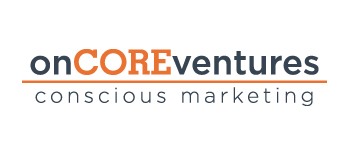Lead Magnet use in conscious marketing

Email marketing is one of the most valuable client attraction strategies you can use, how does the use of a lead magnet fit in? And is it conscious marketing?
When done well, it generates $38 for every $1 spent, keeps you at the top of your audience’s minds, and lets you build their trust by providing them with valuable information that encourages them to buy.
But no amount of emails will do you any good if your subscriber list is empty!
These days, people can be reluctant to give out their email address. In 2016, the average person received about 90 emails per day, which can easily drive a person to become trigger-happy with the “delete” button and gun-shy about inviting more mail into their inbox.
To get them to subscribe to your newsletter, you need to make them an offer they can’t refuse, in the form of a valuable lead magnet.
What is a lead magnet?
A lead magnet is a valuable item that people receive when they put their contact information in your newsletter signup form and submit it.
Lead magnet examples include:
- Free downloadable reports that contain useful guides, tips, or other information. Examples include a list of recipes, a guide on how to use internet marketing, and instructions for growing an indoor vegetable garden.
- Templates for things your clients want to create, such as Facebook ads or blog posts.
- Videos that answer their top-of-mind questions, tell them how to do a task for which they’re seeking instructions, or give tips or walkthroughs that enable them to get a result they desire.
- Questionnaires that help people to evaluate or diagnose their businesses, relationships, diets, or other relevant areas of life. These are highly unique and personal than articles and reports and can help you to learn more about your clients while helping the clients to see how much they need you.
- Tools and toolkits your readers can use to make a task easier.
- Resource lists.
- Digital catalogs of your products, so your readers can see what’s available more quickly and conveniently than they would if they had to wait for the snail mail version. These catalogs should include buying links to make it easy for your customers to make a purchase.
- A discount or free shipping on one of your products or programs.
- Free trials or samples.
What qualities do your lead magnets need in order to be effective?
Here are some of the top qualities of an effective lead magnet:
-
It’s short.
People are busy, and unless they’re REALLY interested in a topic, their attention span will be brief.
If your lead magnet is hundreds of pages long, the sheer size of it will prevent many people from signing up. Of those who do sign up, very few will actually read the whole thing.
That means they won’t be helped or impressed by your lead magnet, so they won’t be motivated to look at any of your other content or products.
Because of that, it’s better to give them a short, effective item that they can start to benefit from within 5 minutes of opting in.
If you can give them great results on just one page, that’s more valuable to them than a 200-page ebook.
That isn’t to say you HAVE to keep it down to one page – if it takes more than that for you to convey the information they need in order to get a result, then make it as long as it needs to be.
Just don’t try to make your lead magnet more appealing by making it longer – that will have the opposite effect.
So how can you give good information, while keeping the lead magnet conveniently short? That’s where quality number two comes in:
-
It’s specific.
When people look at your lead magnet, they should know EXACTLY what they’ll learn and how it will help them. At this early stage in their customer journey, people will often be looking for a single benefit or the answer to a specific question, so focus on the topic they’re seeking.
Trying to cover a wide range of topics in your lead magnet will just make it long and unwieldy, so focus on a single, precise subject.
For example, instead of “All About Gardening”, you could make a guide for “How to Grow Fresh Vegetables Indoors All Year Long”.
-
It can be consumed immediately.
Some people use things like webinars as their lead magnets, and while this can get leads, it isn’t the most effective way to do it.
If people have to wait for hours or days to get the item they were promised, two things happen:
- They have a chance to lose interest while they wait.
- If they discovered the lead magnet through social media, by the time they find out if the offer is any good, the post they clicked has gotten buried in their feed, so they probably won’t dig it up and share it.
If they can receive, use, and get value from the item immediately, they’ll be more motivated to share the link with their friends.
-
It’s uniquely useful and actionable.
The internet is packed with free videos, articles, quizzes, and other content. If you want people to spend time on yours, and if you want the ones who spend time on it to be motivated to make a purchase afterward, you need to give them something special.
Don’t give them basic, beginner-level tips. Instead, blow their socks off by giving them something unique, useful and insightful that makes their lives better right away, or gives them the means to make their lives better.
The advice you give should be specific and actionable.
For example, a “How to Write a Blog Post” guide shouldn’t tell a reader to “give useful information”. They probably already know they should do that, but the whole reason they’re reading the guide is that they don’t know how!
Instead, say something like, “Start with an intro that tells them what they’re about to learn, and what results they’ll get from putting that information to use. Then, list 3-5 actions they need to take in order to get that result.
“Picture the process your clients have to go through in order to create the outcome you’re promising. What actions will they need to take? What are the best practices they should use, and pitfalls they should avoid? Walk them through the process, step by step.”
When they’re done using your lead magnet, your readers should be equipped to do a task more easily or get a result in a specific area of their life.
How do you get people to look at your lead magnet page, and what do you do once they’ve signed up?
Your lead magnet is a vital step in your customer journey, but it isn’t the only one you need.
For a lead magnet to be effective, you need to get people to visit the page where they sign up to get it.
Once they’ve consumed the lead magnet, you need items like newsletter emails to nurture them and sales pages where they can make a purchase, and you might also require webinars to build trust and credibility so you can sell higher-ticket items.
But is it conscious marketing?
That is a tricky question. I have been reluctant to use lead magnets and am only now starting to use them in my business. My reasoning is that most lead magnets that I have seen are outright manipulation and use headlines that are exaggerated. In my tests thus far, if I understate the deliverable the lead magnet (clickbait) does not get attention and if I overstate it, I lose credibility. In both cases, I fail.
Over the next few months, we will continue to experiment with conscious lead magnets and report on success and failure. Perhaps this transparency on our part is what will help develop conscious lead magnets. Our initial thoughts on this are based on our belief that if we use high conscious levels of language, highly conscious people will respond. And, we only really want to work with people that exhibit high levels of consciousness and want to do good stuff for good people. What do you think? How can lead magnets be conscious marketing? Share your comments here or on social media. Or if you are shy contact us.
Not Sure Where to Start?
The world of marketing is rapidly expanding. What’s trending and helping you gain new customers today won’t necessarily be the best way to grow your business tomorrow. With so many moving parts in both the digital and physical marketing space, it’s no wonder small business owners are unsure where they should even start. That’s where the Pittsburgh marketing agency onCOREventures Strategic Marketing comes in. We created onCOREventures for honest business owners wanting to operate in harmony with their core values. If you’re trying to create positive change in the world while also attracting customers who share your values, our “strategy first” methodology may be exactly what you’ve been looking for!
